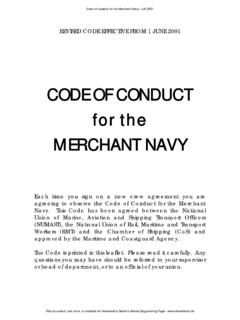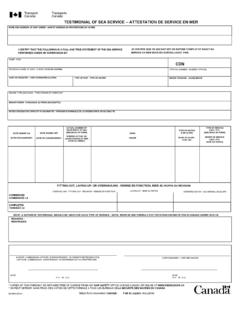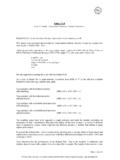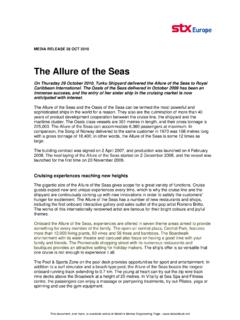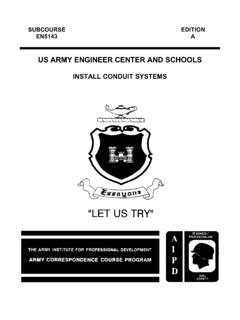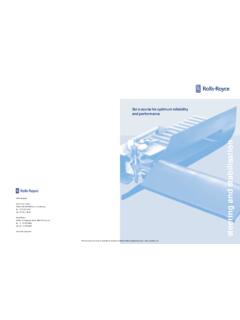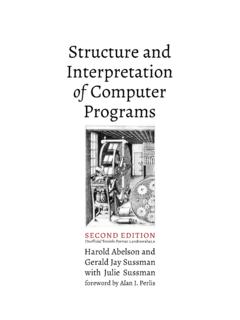Transcription of Fundamentals Handbook Engineering Symbology, Prints, and ...
1 DOE-HDBK-1016/1-93. JANUARY 1993. DOE Fundamentals Handbook . Engineering SYMBOLOGY, PRINTS, AND DRAWINGS. Volume 1 of 2. Department of Energy FSC-6910. Washington, 20585. DISTRIBUTION STATEMENT A. Approved for public release; distribution is unlimited. This document, and more, is available for download at Martin's Marine Engineering Page - This document has been reproduced directly from the best available copy. Available to DOE and DOE contractors from the Office of Scientific and Technical Information, Box 62, Oak Ridge, TN37831. Available to the public from the National Technical Information Service, Department of Commerce, 5285 Port Royal Rd.
2 , Springfield, VA 22161. Order No. DE93012220. This document, and more, is available for download at Martin's Marine Engineering Page - DOE-HDBK-1016/1-93. Engineering SYMBOLOGY, PRINTS, AND DRAWINGS. ABSTRACT. The Engineering Sym bology, Prints, and Drawings Handbook was developed to assist nuclear facility operating contractors in providing operators, maintenance personnel, and technical staff with the necessary Fundamentals training to ensure a basic understanding of Engineering prints, their use, and their function. The Handbook includes information on Engineering fluid drawings and prints; piping and instrument drawings; major symbols and conventions; electronic diagrams and schematics; logic circuits and diagrams; and fabrication, construction, and architectural drawings.
3 This information will provide personnel with a foundation for reading, interpreting, and using the Engineering prints and drawings that are associated with various DOE nuclear facility operations and maintenance. Key Words: Training Material, Print Reading, Piping and Instrument Drawings, Schematics, electrical Diagrams, Block Diagrams, Logic Diagrams, Fabrication Drawings, Construction Drawings, Architectural Drawings Rev. 0 PR. This document, and more, is available for download at Martin's Marine Engineering Page - This document, and more, is available for download at Martin's Marine Engineering Page - DOE-HDBK-1016/1-93. Engineering SYMBOLOGY, PRINTS, AND DRAWINGS.
4 FOREWORD. The Departm ent of Energy (DOE) Fundam entals Handbooks consist of ten academic subjects, which include Mathematics; Classical Physics; Thermodynamics, Heat Transfer, and Fluid Flow; Instrumentation and Control; electrical Science; Material Science; Mechanical Science; Chemistry; Engineering Symbology, Prints, and Drawings; and Nuclear Physics and Reactor Theory. The handbooks are provided as an aid to DOE nuclear facility contractors. These handbooks were first published as Reactor Operator Fundamentals Manuals in 1985 for use by DOE category A reactors. The subject areas, subject matter content, and level of detail of the Reactor Operator Fundamentals Manuals were determined from several sources.
5 DOE Category A reactor training managers determined which materials should be included, and served as a primary reference in the initial development phase. Training guidelines from the commercial nuclear power industry, results of job and task analyses, and independent input from contractors and operations-oriented personnel were all considered and included to some degree in developing the text material and learning objectives. The DOE Fundam entals Handbooks represent the needs of various DOE nuclear facilities'. fundamental training requirements. To increase their applicability to nonreactor nuclear facilities, the Reactor Operator Fundamentals Manual learning objectives were distributed to the Nuclear Facility Training Coordination Program Steering Committee for review and comment.
6 To update their reactor-specific content, DOE Category A reactor training managers also reviewed and commented on the content. On the basis of feedback from these sources, information that applied to two or more DOE nuclear facilities was considered generic and was included. The final draft of each of the handbooks was then reviewed by these two groups. This approach has resulted in revised modular handbooks that contain sufficient detail such that each facility may adjust the content to fit their specific needs. Each Handbook contains an abstract, a foreword, an overview, learning objectives, and text material, and is divided into modules so that content and order may be modified by individual DOE contractors to suit their specific training needs.
7 Each Handbook is supported by a separate examination bank with an answer key. The DOE Fundam entals Handbooks have been prepared for the Assistant Secretary for Nuclear Energy, Office of Nuclear Safety Policy and Standards, by the DOE Training Coordination Program. This program is managed by EG&G Idaho, Inc. Rev. 0 PR. This document, and more, is available for download at Martin's Marine Engineering Page - This document, and more, is available for download at Martin's Marine Engineering Page - DOE-HDBK-1016/1-93. Engineering SYMBOLOGY, PRINTS, AND DRAWINGS. OVERVIEW. The Departm ent of Energy Fundam entals Handbook entitled Engineering Sym bology, Prints, and Drawings was prepared as an information resource for personnel who are responsible for the operation of the Department's nuclear facilities.
8 A basic understanding of Engineering prints and drawings is necessary for DOE nuclear facility operators, maintenance personnel, and the technical staff to safely operate and maintain the facility and facility support systems. The information in the Handbook is presented to provide a foundation for applying Engineering concepts to the job. This knowledge will improve personnel understanding of the impact that their actions may have on the safe and reliable operation of facility components and systems. The Engineering Sym bology, Prints, and Drawings Handbook consists of six modules that are contained in two volumes. The following is a brief description of the information presented in each module of the Handbook .
9 Volume 1 of 2. Module 1 - Introduction to Print Reading This module introduces each type of drawing and its various formats. It also reviews the information contained in the non-drawing areas of a drawing. Module 2 - Engineering Fluid Diagrams and Prints This module introduces Engineering fluid diagrams and prints (P reviews the common symbols and conventions used on P and provides several examples of how to read a P&ID. Module 3 - electrical Diagrams and Schematics This module reviews the major symbols and conventions used on electrical schematics and single line drawings and provides several examples of reading electrical prints.)
10 Rev. 0 PR. This document, and more, is available for download at Martin's Marine Engineering Page - This document, and more, is available for download at Martin's Marine Engineering Page - DOE-HDBK-1016/1-93. Engineering SYMBOLOGY, PRINTS, AND DRAWINGS. OVERVIEW (Cont.). Volume 2 of 2. Module 4 - Electronic Diagrams and Schematics This module reviews electronic schematics and block diagrams. It covers the major symbols used and provides several examples of reading these types of diagrams. Module 5 - Logic Diagrams This module introduces the basic symbols and common conventions used on logic diagrams. It explains how logic prints are used to represent a component's control circuits.

